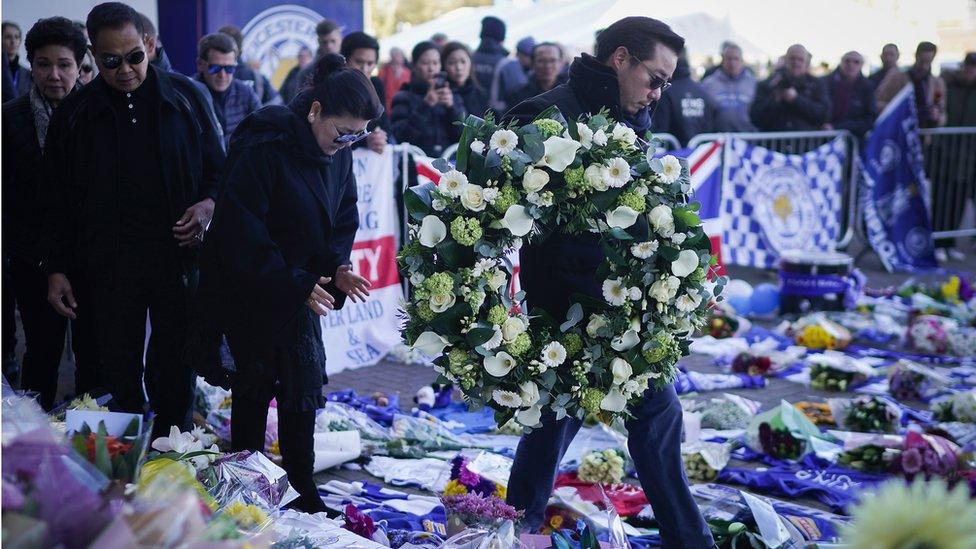Leicester City helicopter crash: Experts analyse video
- Published
The widely shared footage shows the helicopter taking off
While investigators work hard to find the cause of the helicopter crash that killed Leicester City's chairman and four others, the world wonders about what went wrong.
The BBC has asked two aviation experts if they can shed any light on what happened and whether the pilot purposely crashed on wasteland near a car park to save lives.
Jim Rowlands, a former RAF Puma crew member, and aviation security and operations expert Julian Bray have analysed video footage, which shows the helicopter take off, spin out of control and disappear from sight before it crashed outside the King Power Stadium.
Why was the helicopter smoking and was the take-off normal?

(L-R): Vichai Srivaddhanaprabha, Kaveporn Punpare, Nusara Suknamai, Izabela Roza Lechowicz and Eric Swaffer died in the crash
In a longer version of the video, white smoke can be seen coming from the helicopter before it takes off from the pitch, leading some viewers to assume this was caused by a fault.
However, the aviation experts said this was completely normal.
"That's moisture and residue off the exhaust as the whole engine heats up, so there's nothing untoward that I would say about it," said Mr Rowlands.
Mr Bray agreed: "It's normal because it's just starting up. When you start an engine up, sometimes you get some vapour or something coming out."
The experts also agreed that the take-off seemed normal.
"He takes off, goes up and hovers above the stadium, because then he has got to assess which way the wind is coming and wind speed and everything else," said Mr Bray.
"He's getting to a position where he can see where he's going to go. As soon as he's above the top of the stadium roof there could be a change in wind speed or wind direction, because he's sheltered inside the stadium."
Mr Rowlands said: "It all looks very normal in terms of a departure."
At what point did the flight go wrong?
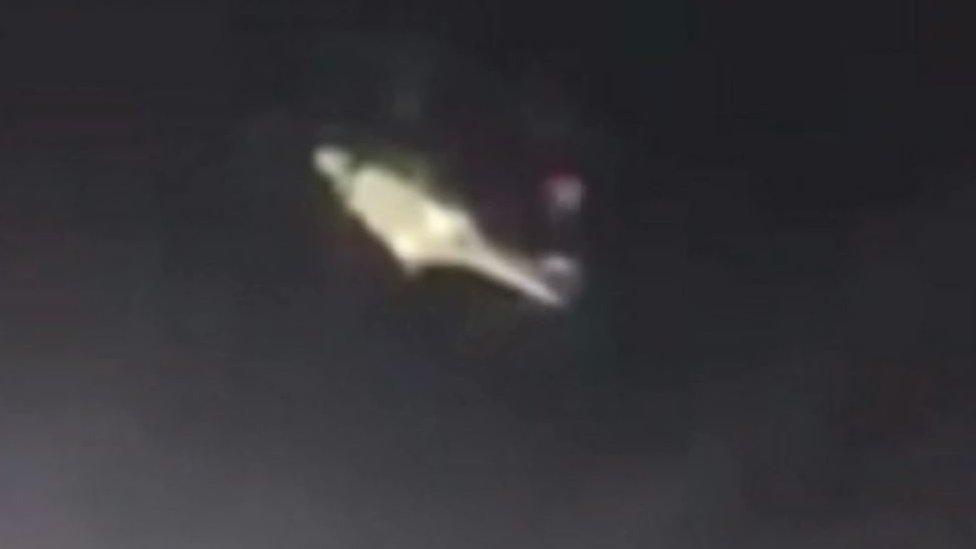
The helicopter pictured after it turned above the King Power Stadium
The experts said the flight appeared to go wrong once the helicopter was above the stadium.
"He climbs up to whatever height he has specified for himself, then starts to transition and move forward, and get a little bit of air speed, but somewhere along the line there, things go wrong very quickly," said Mr Rowlands.
The aircraft starts rotating and can be seen spinning as it descends to the ground.
Mr Bray noted that there was no change in the engine sound, which he said meant it was under power throughout the short flight.
"He goes up and sticks his nose up and has a look around and reads his instruments and starts the helicopter on its course," said Mr Bray.
"It turns three-quarters to us. That's going to be the direction of travel. Then he's going up even further. Then he turns again. At that point something goes horribly wrong.
"He's now rotating but you can still hear the engine going, so it was still under power.
"Listening to it, there's no change in the engine sound. The sound seems to be consistent all the way through. There's no explosion, nothing, then it suddenly starts to rotate."
What caused the helicopter to spin?
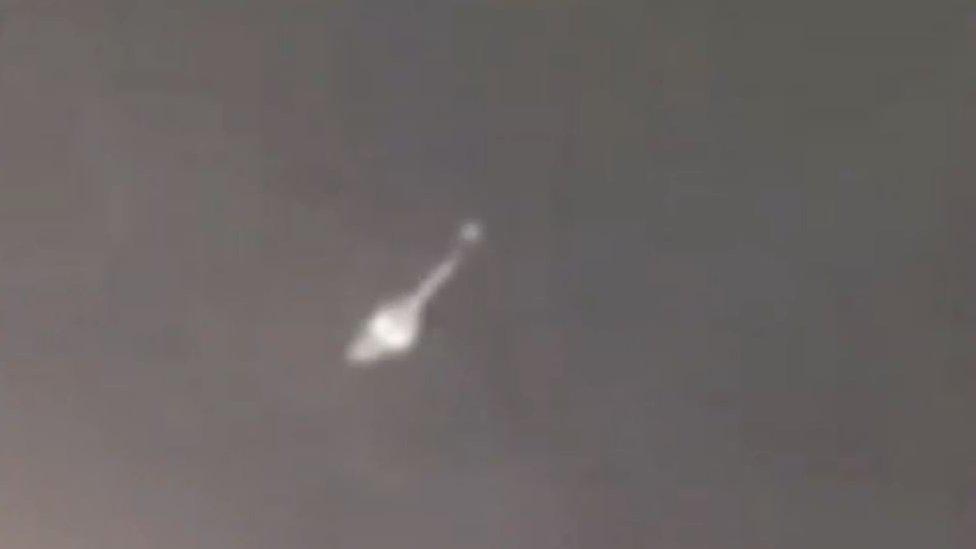
Mr Rowlands believes the helicopter suffered a tail rotor drive failure
The experts agreed that there appeared to be a problem with the tail rotor, which explains why the helicopter started spinning.
The tail rotor is at the back of a helicopter and is there to prevent the aircraft spinning in the opposite direction to the main rotor blades.
"Basically it's a loss of power to the tail rotor," Mr Rowlands said.
"It's impossible to say what could have caused it, and it's really important we acknowledge that it's only the AAIB that can draw any conclusions or any causes."
The Air Accidents Investigation Branch, which is examining the flight recorders, has said it is "too early" to comment on the video or the possible causes of the crash, adding that it would "consider a wealth of evidence, and the video is just one element".
Mr Bray theorised that the helicopter could have hit a drone or large bird or even been sabotaged, but stressed this was "purely speculative".
"It would have to be a very big bird," he said.
"Dare I say it might even be a drone for all we know? But it would have to be a fairly large drone; I don't think a small domestic one would do it.
"I would say sabotage cannot be ruled out."
Mr Bray said a mechanical fault was also possible, but he believes this is unlikely.
"These things are checked to the nth degree and any professional pilot will want to make sure his aircraft is safe," he said.
"Obviously, they are putting their own lives at risk.
"It's very, very weird."
What could the pilot have done?
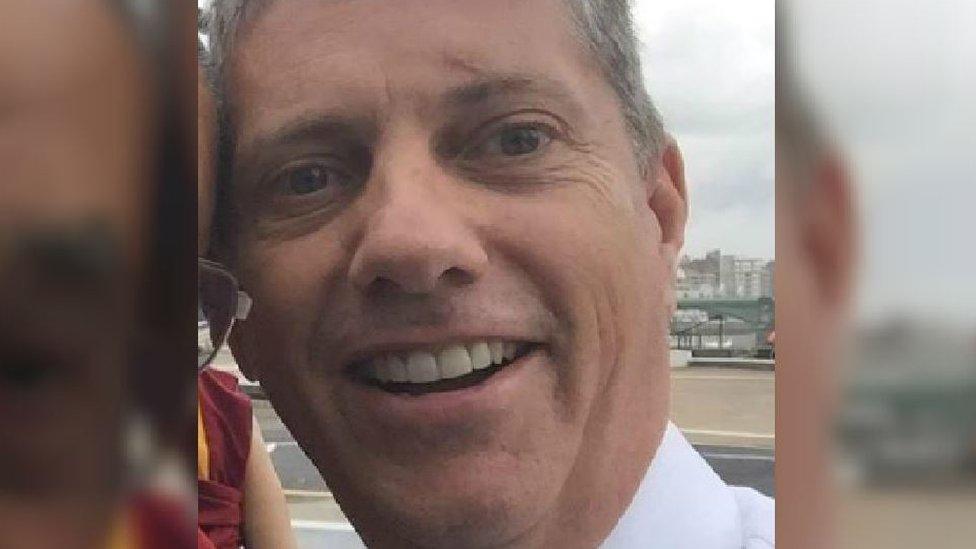
Eric Swaffer had more than 20 years of flying experience
Mr Bray said there was "absolutely nothing the pilot can do" once there was no working tail rotor to stabilise a helicopter.
However, Mr Rowlands said the pilot would in theory have had a degree of control.
"You haven't really got it in the yawing plane [rotating], you've got it in roll and pitch, which are the three axes that an aircraft move in," he said.
"The one thing that he would have had control of more than anything else was his rate of descent and when he was going to descend.
"When you get a tail rotor drive failure without any forward air speed, the only option you've got is to make the best emergency engines-off landing that you can, but this guy really has very little time to do all that."
He presumes the pilot would have practised this kind of emergency in simulators.
"Certainly in the military you would practise tail rotor drive failures in a simulator almost constantly, and because it's an emergency that requires such an immediate reaction it's the kind of thing that gets ingrained and emblazoned on every operator's mind," he said.
"You enter this autorotative state which is a bit like a sycamore seed spinning to the ground, you are using that lift that's left in the blades to do that."
However, he admitted that the probability of surviving a tail rotor failure was "quite low".
"Talking through it versus the reality of the real world, there's obviously an incredible amount of forces going on. The aircraft is spinning around all over the shop, you've obviously got a lot of things going on, it's incredibly disorientating.
"Thankfully, they are not the kind of things that happen often and I certainly don't have any personal first-hand experience of a real one, and I don't know anybody who does.
"It's not a normal circumstance. It's one of those things you hope never happens."
Did the pilot save lives?
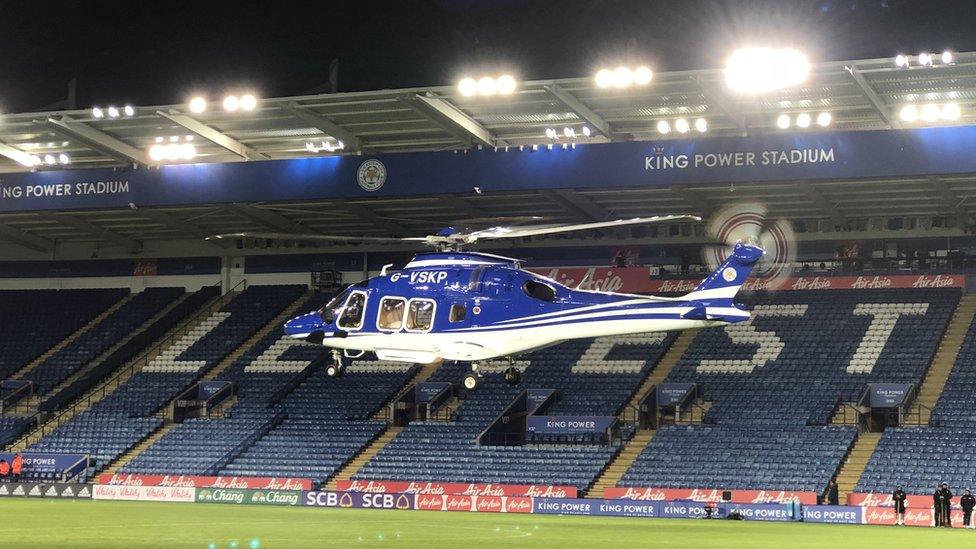
The AW169 helicopter, pictured here landing at the stadium after the game, was built in 2016 and owned by a company called Foxborough Ltd
The aircraft landed on disused land next to a car park, which Mr Bray believes was probably due to "luck".
However, Mr Rowlands believes the pilot manoeuvred the aircraft to prevent loss of life to people on the ground.
"The fact that no-one else apart from people in the aircraft were injured is pretty amazing and I think that's why it's testament to the pilot," he said.
He said the pilot would have identified emergency landing sites as he was flying into the stadium.
"Whatever control that he has had left he has been able to make that landing site, which is no mean feat," he said.
"And he has held off his main descent and autorotation until he had cleared the stadium building, which I think is pretty impressive.
"It's quite a disorientating environment to be in and I think the pilot has done well because not only has he got control of the aircraft, but he's trying to minimise the impact of any incident."

Follow BBC East Midlands on Facebook, external, on Twitter, external, or on Instagram, external. Send your story ideas to eastmidsnews@bbc.co.uk, external.
- Published1 November 2018

- Published31 October 2018

- Published31 October 2018

- Published30 October 2018
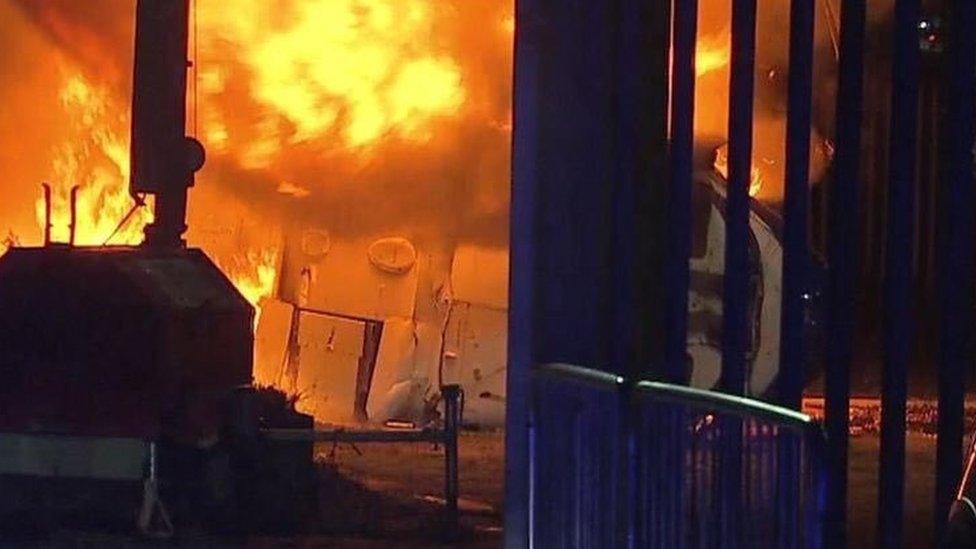
- Attribution
- Published29 October 2018

- Published29 October 2018
